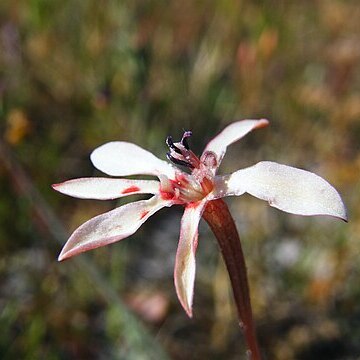Leaves several, the lower 2–3 membranous and sheathing the stem base (cataphylls); the foliage leaves few or sometimes solitary, plane, or shallowly plicate-corrugate, or terete, the lowermost longest and inserted on the stem near ground level, the upper leaves cauline and progressively smaller.
Inflorescence panicle-like, or a simple to branched spike, or flowers clustered at ground level; bracts green to membranous, the outer sometimes ridged, keeled, crisped or toothed.
Flowers blue, purple, red, white or pink, actinomorphic or zygomorphic; tepals connate into a short to long perianth tube; tepal lobes subequal or unequal.
Perennial herbs with bell-shaped flat-based corms, aerial parts dying back annually; corm tunics of densely compacted fibres or woody.
Style filiform; style branches usually forked for up to half of their length, sometimes entire or barely bifid.
Stamens symmetrically disposed around the style or unilateral and arcuate.
Stem somewhat compressed and angular, sometimes entirely subterranean.
Capsules membranous to coriaceous, more or less globose.
Seeds more or less globose.

